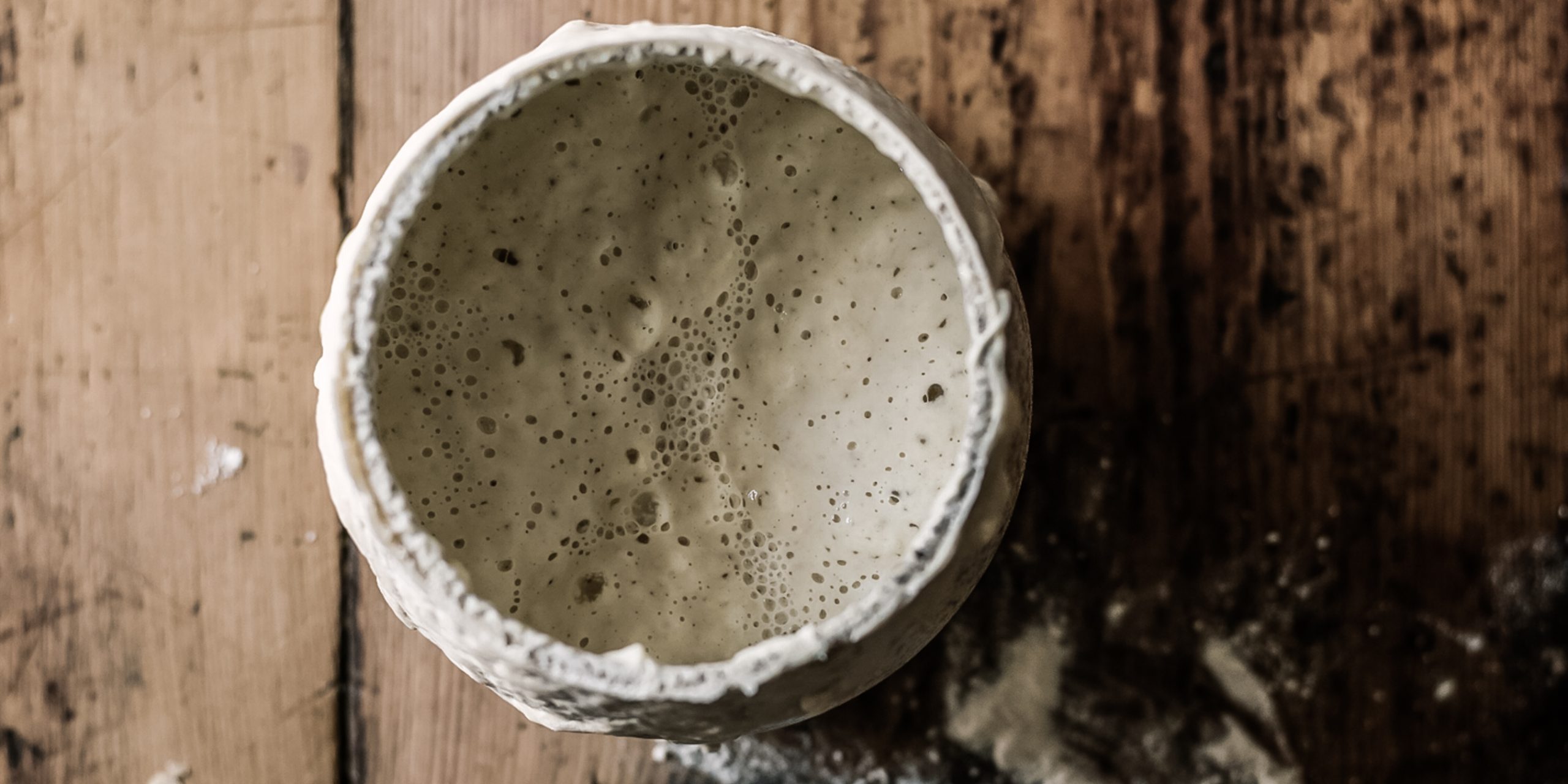There used to be a time when packaged yeast wasn’t available in stores. Until people figured out how to grow, harvest and keep yeast in a package that could sit on a shelf and still be activated when needed, they had to rely on using bread starters in order to make bread with yeast. Yeast is a living organism that when given the proper conditions, namely warmth, moisture and a food source like sugar, it ferments and produces carbon dioxide gas, which rises the bread dough. Unless the yeast is kept alive, it won’t work in making bread.
Yeast is available today in grocery stores in small packets or jars. It is held in an inactive state until needed for baking bread. In the olden days people kept yeast alive in what’s known as a starter culture, or starter. Although we can go to the store and buy yeast ready to be used in a recipe, the flavor given to the bread when using a starter is characteristic and often desirable. Most famously, sourdough bread is made using a buy sourdough starter.
A starter is a culture of yeast that contains water, flour and sugar. Here’s how to make your own yeast starter culture. Soften a packet of dry yeast (¼ oz.) in half a cup of warm water for about ten minutes. Use a glass or plastic bowl for mixing and add the softened yeast to one and a half cups lukewarm water, 2 cups bread flour, and one tablespoon sugar. Beat the mixture until it’s smooth.
Then, cover the bowl with a dish towel. It’s important to not use a tight-fitting lid as the yeast needs air to breathe, just like you and me. For four or five days let the mixture sit, stirring it a couple times a day. The mixture will get bubbly as the yeast grows and ferments. Alternatively, starter cultures can be purchased at specialty stores or supermarkets. These cultures start out as a dry mix to which you add bottled water.
As yeast is a living organism it’s very important to use utensils and ingredients that will keep it alive. Use bottled water so contaminants, like chlorine or iron, won’t harm the yeast that you’re trying to grow. Use plastic or wooden spoons to stir the mixture. Metal spoons and bowls, like copper and aluminum, can be toxic to yeast.
Recipes typically call for one cup of the starter. After measuring out one cup replenish the starter by adding ¾ cup water, ¾ cup bread flour, and one teaspoon sugar. Stir and let stand at room temperature at least overnight. The starter can be refrigerated for up to ten days. Bring to room temperature before using in a recipe. If the starter turns orange, throw it away and start over.

